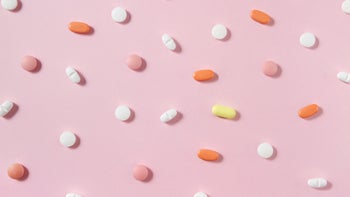
Proceed With Caution With These 5 Jardiance Interactions
Key takeaways:
Jardiance (empagliflozin) interacts with diuretics (“water pills”), insulin, and medications that cause your body to release insulin. It may also interfere with lithium (Lithobid).
There are some foods you may want to avoid while taking Jardiance. Caffeine can worsen certain side effects. Foods high in sugar or that are ultra-processed can make it harder for Jardiance to treat Type 2 diabetes. And alcohol can both worsen side effects and reduce some of Jardiance’s health benefits.
Typically, Jardiance interactions can be managed with dosage changes. Sharing an updated medication list with your healthcare team is important in helping catch interactions before they happen.
Access savings on related medications
Table of contents

Jardiance (empagliflozin) is a medication that has many uses. This includes treating Type 2 diabetes, chronic kidney disease, and heart failure. It can also help lower the risk of death or severe heart-related issues that these conditions can cause. While Jardiance has many possible benefits, it’s not free of risks, including interactions.
Jardiance is a sodium-glucose cotransporter-2 inhibitor (SGLT2 inhibitor or “flozin”). It mainly works in the kidneys to help stop the body from reabsorbing sugar (glucose) back into the blood. This helps lower blood sugar in people with Type 2 diabetes.
Because of how it works, Jardiance can interact with other medications that go through the kidneys or lower your blood sugar. What’s more certain foods and drinks may worsen its side effects or combat its benefits.
Save over 40% on Qsymia with GoodRx
Discover the once daily Qsymia for weight management. Qsymia is for adults and children 12-17 in combination with a healthy diet and regular exercise.

So what drugs should not be taken with Jardiance? And are there foods you should avoid?
Jardiance interactions
The following medications and foods can interact with Jardiance:
Diuretics (water pills), such as furosemide (Lasix)
Insulin
Sulfonylureas, such as glipizide (Glucotrol XL)
Glinides (meglitinides), such as repaglinide
Lithium (Lithobid)
This isn’t a complete list. So be sure to tell your prescriber and pharmacist what medications you take before starting Jardiance.
Below, we’ll discuss these five Jardiance interactions, plus foods and drinks you may want to limit.
1. Diuretics (water pills)
Diuretics are a common group of medications that can help lower blood pressure. They’re also often prescribed for people with heart failure. One side effect of diuretics is having to pee more often. Jardiance also has this side effect. Taking Jardiance and a diuretic together may make you have to pee even more often than you would with just one.
But greater urination could be more than just an annoyance. It can lead to dehydration, which could cause dizziness or low blood pressure. There’s a risk of dehydration with Jardiance and diuretics when taken by themselves. The risk goes up more when combining them.
Another factor to consider is that some diuretics can raise your blood sugar. This could make it harder for Jardiance to manage diabetes.
Examples of common diuretics include:
Chlorthalidone (Thalitone)
Furosemide
Hydrochlorothiazide (Microzide)
Spironolactone (Aldactone)
Foods to avoid: Read more about which foods interact with Jardiance (empagliflozin).
More about side effects: Many Jardiance interactions raise the risk for certain side effects, such as dehydration or low blood glucose (blood sugar).
Not sure what to expect when starting Jardiance? Three people share what it feels like to take Jardiance.
There are times where you may need both Jardiance and a diuretic, especially if you have heart failure. If this is the case, your prescriber will likely watch you more regularly with blood tests. This will help them spot signs of dehydration and make medication changes if needed.
2. Insulin
Insulin is one of the oldest diabetes medications, and it’s still used today. One well-known side effect of insulin is that it can cause low blood sugar (hypoglycemia). Although Jardiance has a warning for this risk, it’s unlikely to cause low blood sugar on its own. But when taking Jardiance and insulin together, the risk goes up.
Low blood sugar can cause many symptoms, including dizziness, sweating, and shakiness. In severe cases, it can even be fatal. So it’s important to be able to recognize and treat it quickly if it happens to you. Eating 15 g of fast-acting sugar (e.g., 4 glucose tablets, 1 tbsp of honey) can help raise your sugar back to a safe level.
It’s possible your prescriber may feel you need both Jardiance and insulin. In this case, they may help you make insulin dosage adjustments to help prevent low blood sugar. They may also ask you to check your blood sugar at home more often. If you notice your sugar levels are lower more often than usual, let your healthcare team know.
3. Sulfonylureas
Sulfonylureas, such as glipizide, are another group of diabetes medications. They work by helping your pancreas release more insulin in the body. Because of this, they can cause low blood sugar. The risk of this side effect goes up if you’re also taking Jardiance.
If you’ve been prescribed both Jardiance and a sulfonylurea, watch for symptoms of low blood sugar. Be sure to tell your healthcare team if your sugar levels have been low. They may suggest dosage changes to your sulfonylurea to help manage this Jardiance interaction.
4. Glinides
Glinides, such as repaglinide, are less commonly prescribed than other diabetes medications. They work similarly to sulfonylureas. So they can also lead to low blood sugar when taken with Jardiance.
Your prescriber may lower your glinide dosage when you first start Jardiance. Be sure to check your blood sugar as recommended while taking both medications. If you notice your sugar is often lower than your goal range, let your healthcare team know. You may need further dosage adjustments.
5. Lithium
Lithium is a medication that’s prescribed for mental health conditions, such as bipolar disorder. It has a number of interactions because small changes in dose can significantly impact how it works. There are reports that Jardiance may make lithium less effective.
Your kidneys clear lithium from your body. When other medications affect the kidneys, they can change how much lithium is cleared. Some researchers have found that Jardiance causes the kidneys to remove lithium from the body faster. This could lead to lower lithium levels and possibly lower its effectiveness.
It’s unlikely that your prescriber would stop one of these medications to make up for this interaction. But they may recommend more frequent lithium blood tests if you’re also taking Jardiance. This can help them make sure your lithium dose isn’t too low or high. They may raise your dose if they notice your levels have dropped.
Can you take Jardiance and Ozempic together?
Yes, you can take Jardiance and Ozempic (semaglutide) together if needed. In fact, combining these medications can be helpful if you’re not meeting your goal blood sugar range with just one medication. But not everyone needs both medications. It’s recommended to try Jardiance or Ozempic by itself before taking both together.
Both Jardiance and Ozempic have a low risk of low blood sugar. But this side effect is possible with either medication. So if you do start taking both, be sure to check your sugar levels as instructed by your prescriber.
Are there foods you should avoid while taking Jardiance?
Yes, there are foods you may want to avoid while taking Jardiance. But these aren’t direct interactions, meaning they don’t change how Jardiance works in your body. These foods or beverages can either worsen Jardiance’s side effects or reduce its potential benefits.
Jardiance and caffeine
Caffeine has a mild diuretic effect. And while it won’t dehydrate you, it’ll likely make you pee more after consuming it. This can worsen one of the most common Jardiance side effects: increased urination. You may find that limiting or avoiding caffeine helps minimize this side effect.
Keep in mind caffeine is in more than just coffee or tea. Sodas, energy drinks, and hot chocolate can also contain caffeine. And many over-the-counter (OTC) products, such as migraine medications, include caffeine as an active ingredient.
Jardiance and alcohol
You likely know that alcohol and medications typically don’t mix well. In the case of alcohol and Jardiance, the interaction is three-fold.
Alcoholic beverages, especially those with a higher alcohol content, make you have to pee. Similar to caffeine, this can worsen Jardiance’s urination side effect. But unlike caffeine, alcohol can dehydrate you. So drinking alcohol with Jardiance could raise your risk of dehydration.
Beyond urination-related effects, alcohol can also raise your risk of low blood sugar. As mentioned above, Jardiance has a low risk of this serious side effect. But combining the two could make it more likely. This is especially true if you’re also taking insulin, sulfonylureas, or glinides.
What’s more, heavy or long-term alcohol use can raise your risk for heart-related health problems. If you’re taking Jardiance to treat heart failure or prevent heart complications, alcohol could reduce its potential benefits.
Jardiance and high-sugar foods
Eating foods or drinks with added sugars can raise your blood sugar. And this can make it harder for Jardiance to manage your sugar levels if you’re taking it for Type 2 diabetes. You can check for the amount of sugar and added sugars on food and beverage nutrition labels.
It’s also good to know that “sugar” goes by many names, so it can be tricky to spot it on labels. The following are examples of other names for sugar:
Caramel
Corn syrup or high-fructose corn syrup
Dextrose
Fruit juice or fruit juice concentrate
Honey
Lactose
Maltodextrin
Molasses
Sucrose
Of course, it’s not realistic to completely avoid foods or drinks with added sugars. But you may want to limit how much or how often you’re consuming them.
Jardiance and ultra-processed carbohydrates
Ultra-processed foods are those that are greatly changed from the natural foods they’re derived from. There’s evidence that eating ultra-processed foods may have negative impacts on your health.
In particular, ultra-processed carbohydrates (also called refined carbohydrates) can elevate blood sugar levels. And this can impact Jardiance’s ability to help manage sugar levels for people with diabetes. Examples of foods that contain ultra-processed carbohydrates include:
Crackers
Refined breakfast cereals
White bread
White flour
White pasta
White rice
Similar to added sugars, totally avoiding ultra-processed foods may not be possible for you. But limiting or cutting back on them is a good idea, especially if you have Type 2 diabetes.
Frequently asked questions
If you’re taking Jardiance, you may want to avoid also taking vitamins or supplements that raise or lower blood sugar. This could affect how Jardiance works to manage your blood sugar. Vitamins and supplements that raise blood sugar include niacin (vitamin B3) and ginkgo biloba. Supplements that can lower blood sugar include ginseng, aloe vera, and green tea extract.
Generally, yes, it’s safe for most people to combine Jardiance with blood pressure medications, such as angiotensin-converting enzyme (ACE) inhibitors. In fact, these combinations are recommended to manage certain conditions, such as heart failure or kidney disease. But you may need to be cautious about taking both Jardiance and a diuretic. These can both cause you to urinate more, which can lead to dehydration in severe cases.
Yes, you can take Tylenol (acetaminophen) with Jardiance. There are no known interactions between these medications. But it’s good to know that Tylenol and other medications that contain acetaminophen can cause incorrect elevated sugar readings if you use certain continuous glucose monitors (CGMs). This is because it affects how CGMs scan the fluid under your skin for sugar. Tylenol doesn’t actually raise your blood sugar.
The bottom line
Jardiance (empagliflozin) interacts with diuretics (water pills) and insulin. It can also interact with sulfonylureas, glinides, and lithium (Lithobid). Some combinations can raise the risk of low blood sugar, one of Jardiance’s serious warnings. Others can make dehydration more likely. Many Jardiance interactions can be managed by changing medication doses.
There are also some foods you may want to avoid while taking Jardiance. Caffeine can worsen certain Jardiance side effects. High-sugar foods and ultra-processed carbohydrates may reduce some of Jardiance’s benefits. And alcohol can both worsen the medication’s side effects and lessen its health benefits.
Let your healthcare team know if you notice new or excessive side effects. These can be symptoms of a Jardiance interaction, especially if you just introduced a new medication or supplement into your daily routine.
Why trust our experts?



References
American Diabetes Association. (2019). The history of a wonderful thing we call insulin.
American Heart Association. (2023). Carbohydrates.
Armstrong, G. P. (2020). Empagliflozin-mediated lithium excretion: A case study and clinical applications. American Journal of Case Reports.
Boehringer Ingelheim Pharmaceuticals. (2025). Jardiance- empagliflozin tablet, film coated [package insert]. DailyMed.
Guardado-Mendoza, R., et al. (2013). The role of nateglinide and repaglinide, derivatives of meglitinide. Archives of Medical Science.
Heidenreich, P. A., et al. (2022). 2022 AHA/ACC/HFSA guideline for the management of heart failure: A report of the American College of Cardiology/American Heart Association joint committee on clinical practice guidelines. Circulation.
Kidney Disease: Improving Global Outcomes CKD Work Group. (2024). KDIGO 2024 clinical practice guideline for the evaluation and management of chronic kidney disease. Kidney International.
Nelinson, D. S., et al. (2021). SGLT2 inhibitors: A narrative review of efficacy and safety. Journal of Osteopathic Medicine.
Was this page helpful?
Related Articles
Browse medications
View AllResearch prescriptions and over-the-counter medications from A to Z, compare drug prices, and start saving.




























